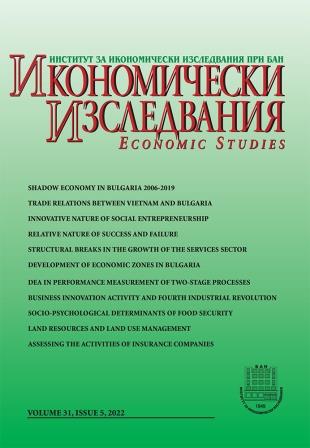DEA in Performance Measurement of Two-Stage Processes: Comparative Overview of the Literature
DEA in Performance Measurement of Two-Stage Processes: Comparative Overview of the Literature
Author(s): Tatiana Bencová, Andrea BoháčikováSubject(s): Economy, Business Economy / Management
Published by: Институт за икономически изследвания при Българска академия на науките
Keywords: Data Envelopment Analysis; Efficiency; Intermediate product; Internal structures; Two-stage process; Two-stage NDEA
Summary/Abstract: Standard non-parametric Data Envelopment Analysis (DEA) introduced by Charnes, Cooper, Rhodes (1978) does not provide adequate detail to identify the specific sources of inefficiency embedded in the activities on the level of production sub-processes of an enterprise, without considering the internal structure of the business. One of the DEA applications is to evaluate the efficiency of two-stage processes, where all outputs of the first stage are intermediate measures, which are considered as inputs of the second stage. In recent years, there has been an exponential growth in the number of publications related to theory and applications of efficiency measurement for two-stage systems. These models assess both the overall efficiency score of the whole process and each of the individual sub-processes. Results from the analysis give an approach to the significant more detailed information that would otherwise remain hidden in the ,,black box” of efficiency analysis. Opening the black box of efficiency analysis offers managers to monitor and measure the efficiency of their production sub-processes. The management is able to early detection of the inefficiencies in the production process. The aim of the paper is twofold. The first task is to survey and classify the Two-stage DEA models and present the applications of these models across the literature. The second aim is to offer important support to future researchers, providing a ,,new” knowledge base regarding network DEA methods and encourage researchers to collect data suitable for this type of network analysis.The objective of the work is to review the network DEA literature, because the number of studies which seek to measure the efficiency and productivity of decision-making units with internal structures has increased in the last years dramatically. This paper aims to support future researchers on this topic.
Journal: Икономически изследвания
- Issue Year: 2022
- Issue No: 5
- Page Range: 111-129
- Page Count: 19
- Language: English

